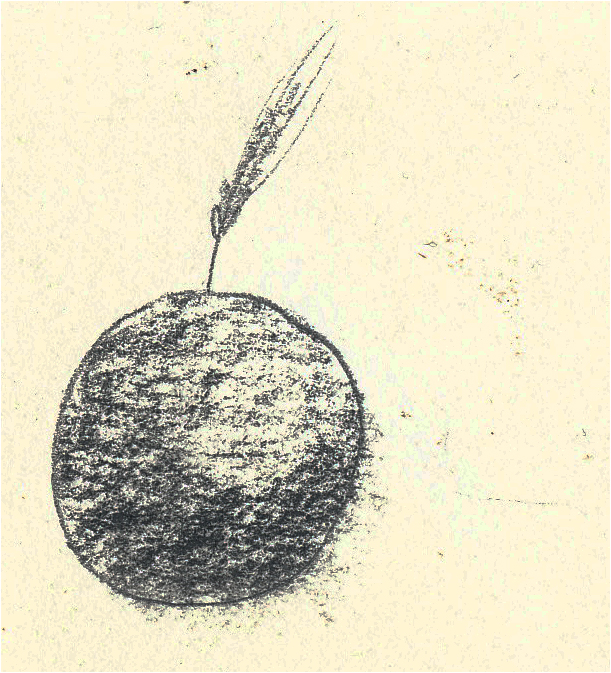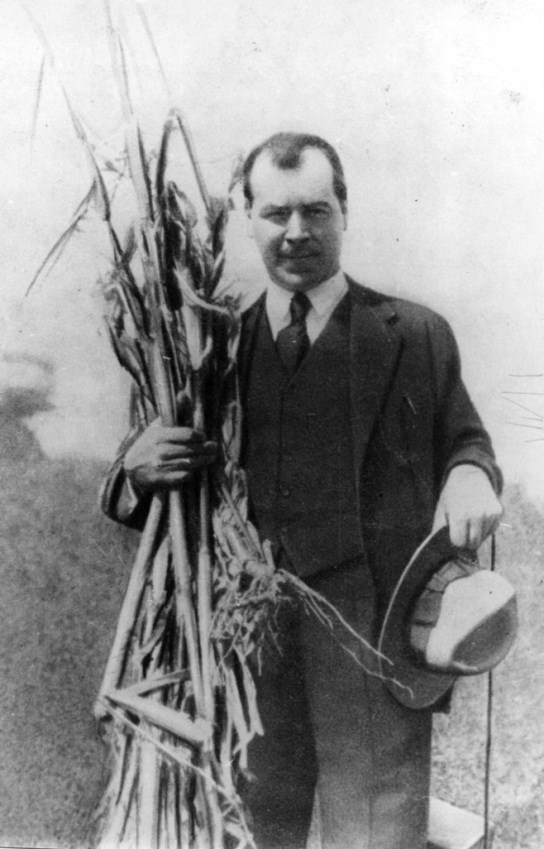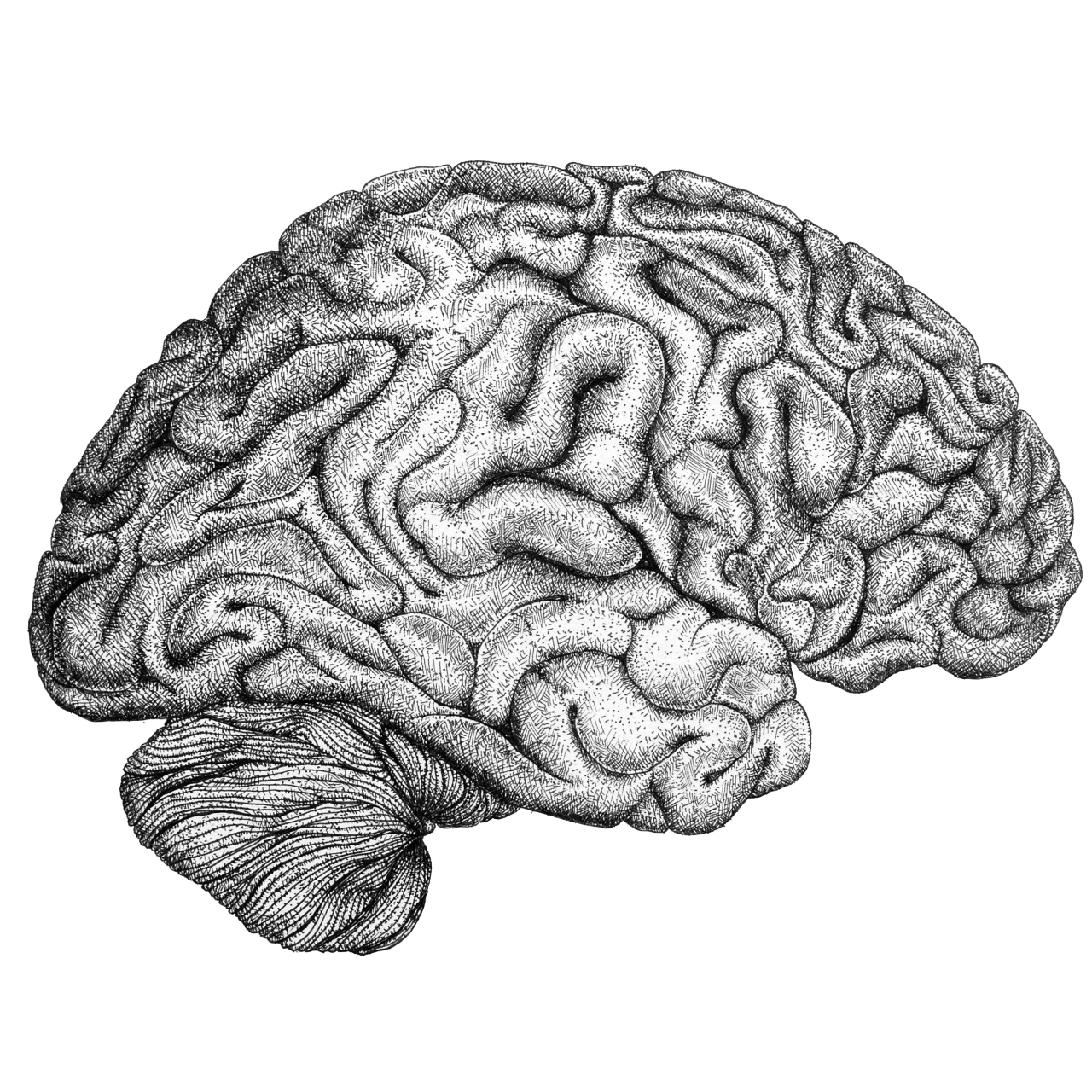Einkorn, Unlikely Beneficiary of the Gluten Persecution
03/18At this point you may or may not have heard something about einkorn. Like many forebears to great prestige and notoriety, it has suffered a long sleep in the peripheral shadow of common taste, despite being the honest to goodness Mother of Wheat. Really, it was cultivated likely as far back as 10,000 years, long before the rightfully so-called bread wheat (triticum aestivum), the stuff in your bag of all-purpose flour and 95% of wheat grown on the planet today, even existed.



There’s a lot more information out there about einkorn in 2018 than in years prior (though availability to procure trails behind press), it’s resurgence a benefit of the culinary elite’s embracing of all things ancient, along with the (very American) eternal search for a panacea including bread without bloat. Don’t be misled, einkorn absolutely has gluten in it, but even for many with bonafide Celiac Disease, einkorn often produces few to zero symptoms of inflammation. Further proof of nuance in the great Gluten Persecution of the modern age!
Einkorn produces a dough of low-level elasticity when handled correctly- you’re not going to get 100% einkorn croissant dough anytime soon- and plays along well considering how unequipped it’s protein structure really is for bread making. It’s not nearly as pliable or buoyant as common wheat, and is much harder to get a stretch and rise from.It’s also poorly built for any manner of heavy duty mechanization, the introduction of which brought the wheat we’re all more familiar with, which is much easier to harvest, process and bake into palatable and consistent loaves, to the top. Einkorn has a tough outer husk (called the glume, if you can believe it), and will not wait patiently on the stalk for the farmer to harvest it. For sure, this founder crop and others like it brought on the Neolithic Revolution; they were not an engineered product of it. Once we’d become sedentary agriculturalists (another reason some Paleo diet enthusiasts and their ilk shun the introduction of wheat, blaming the loss of hunting and gathering for the toxic market-based inferno of an industrial civilization in which we exist, as if humans ever stood a chance of avoiding it!), a wheat that played according to the rules of cultivation won the affection of both machine and consumer.
![]() Einkorn sourdough, recipe below
The science of einkorn’s genetic makeup has been thoroughly discussed at this point (have yourself a Google), and while I can yap about the difference between a diploid and a hexaploid chromosomic structure with insouciant ignorance, there are others better suited for explaining its intricacies (a few sources are linked at the bottom of this page). So I’ll be brief: einkorn has half the amount of chromosomes found in modern bread wheat. That means it has lower gluten levels, making it much easier to digest for everyone, not just those with sensitivities. It has more protein, Vitamin B6, carotenoids and phosphorous (which keeps your bones strong) than modern bread wheat, too. Normally the cons for these kinds of pros, when we’re talking bread, are a heavy texture and lingering bitter earthiness. Baking with einkorn manages instead to impart a nutty sweetness to breads, though the process feels a little different than making a standard loaf. Ask the right person (me) and they’ll tell you this bread is better than most made with regular wheat, not just a fine alternative if necessary.
Einkorn sourdough, recipe below
The science of einkorn’s genetic makeup has been thoroughly discussed at this point (have yourself a Google), and while I can yap about the difference between a diploid and a hexaploid chromosomic structure with insouciant ignorance, there are others better suited for explaining its intricacies (a few sources are linked at the bottom of this page). So I’ll be brief: einkorn has half the amount of chromosomes found in modern bread wheat. That means it has lower gluten levels, making it much easier to digest for everyone, not just those with sensitivities. It has more protein, Vitamin B6, carotenoids and phosphorous (which keeps your bones strong) than modern bread wheat, too. Normally the cons for these kinds of pros, when we’re talking bread, are a heavy texture and lingering bitter earthiness. Baking with einkorn manages instead to impart a nutty sweetness to breads, though the process feels a little different than making a standard loaf. Ask the right person (me) and they’ll tell you this bread is better than most made with regular wheat, not just a fine alternative if necessary.
All of this improved health and flavor propaganda aside, the bigger story provides even more reasons to partake. Einkorn developed in the Fertile Crescent near Karacadağ, a volcano on the border of Turkey and Syria, tens of thousands of years ago. This site is einkorn’s Vavilov Center*, an area where a crop originates, and one that is vital to its health. I think of it as the plant’s ‘safe space’. Vavilov Centers are ideally suited for the crop’s maintenance and hold keys to their propagation, especially as climates shift and modern hybrids, which often lack resiliency in the face of change, suffer the consequences. The birthplace of this crop has been radically effected by the conflict in Syria, and the seed bank holding it’s progeny, which was centered in Aleppo, has been damaged and transferred to Beirut in whatever capacity possible. At this point, Syria is the only country in the world to have already requested seeds back from the aptly titled ‘doomsday’ seed vault in Svalbard, Norway. Of the request, 300 varieties were einkorn. Those seeds are now being grown in parts of North Africa whose climate is reminiscent of the land from which they originally sprung.
![]() Einkorn really is the most ancient of grains: it grew wild for millions of years before cultivation and is the only wheat to never be hybridized. This gives it a unique ability to help researchers and growers develop breeds of wheat that can withstand an increasingly inhospitable and changeable planet, considering it’s ability to maintain for the last few millennia. Unlike hybrid common bread wheat, einkorn has clues locked in it’s untouched DNA which can ultimately underscore universal food security. Despite this, the demand will never touch that of bread wheat, so every bit of public interest counts. The growing popularity in the grain doesn’t just help new distributors profit off a trending item, it allows these farmers to keep growing it. A big win for everyone.
Einkorn really is the most ancient of grains: it grew wild for millions of years before cultivation and is the only wheat to never be hybridized. This gives it a unique ability to help researchers and growers develop breeds of wheat that can withstand an increasingly inhospitable and changeable planet, considering it’s ability to maintain for the last few millennia. Unlike hybrid common bread wheat, einkorn has clues locked in it’s untouched DNA which can ultimately underscore universal food security. Despite this, the demand will never touch that of bread wheat, so every bit of public interest counts. The growing popularity in the grain doesn’t just help new distributors profit off a trending item, it allows these farmers to keep growing it. A big win for everyone.
*Named after Nikolai Vavilov, a Russian botanist and a founding father of the systematic preservation of seeds and biodiversity, who, in one of the most ironic deaths of all time, starved in prison as his seed bank was held under siege in the throes of WWII. Other staff members of the seed bank also starved inside the building while protecting the sacks of saved- and edible- seed.
![]()
The man, the myth, Nikolai Vavilov
Here is a recipe.
There’s a lot more information out there about einkorn in 2018 than in years prior (though availability to procure trails behind press), it’s resurgence a benefit of the culinary elite’s embracing of all things ancient, along with the (very American) eternal search for a panacea including bread without bloat. Don’t be misled, einkorn absolutely has gluten in it, but even for many with bonafide Celiac Disease, einkorn often produces few to zero symptoms of inflammation. Further proof of nuance in the great Gluten Persecution of the modern age!
Einkorn produces a dough of low-level elasticity when handled correctly- you’re not going to get 100% einkorn croissant dough anytime soon- and plays along well considering how unequipped it’s protein structure really is for bread making. It’s not nearly as pliable or buoyant as common wheat, and is much harder to get a stretch and rise from.
Einkorn produces a dough of low-level elasticity when handled correctly- you’re not going to get 100% einkorn croissant dough anytime soon- and plays along well considering how unequipped it’s protein structure really is for bread making. It’s not nearly as pliable or buoyant as common wheat, and is much harder to get a stretch and rise from.
It’s also poorly built for any manner of heavy duty mechanization, the introduction of which brought the wheat we’re all more familiar with, which is much easier to harvest, process and bake into palatable and consistent loaves, to the top. Einkorn has a tough outer husk (called the glume, if you can believe it), and will not wait patiently on the stalk for the farmer to harvest it. For sure, this founder crop and others like it brought on the Neolithic Revolution; they were not an engineered product of it. Once we’d become sedentary agriculturalists (another reason some Paleo diet enthusiasts and their ilk shun the introduction of wheat, blaming the loss of hunting and gathering for the toxic market-based inferno of an industrial civilization in which we exist, as if humans ever stood a chance of avoiding it!), a wheat that played according to the rules of cultivation won the affection of both machine and consumer.
The science of einkorn’s genetic makeup has been thoroughly discussed at this point (have yourself a Google), and while I can yap about the difference between a diploid and a hexaploid chromosomic structure with insouciant ignorance, there are others better suited for explaining its intricacies (a few sources are linked at the bottom of this page). So I’ll be brief: einkorn has half the amount of chromosomes found in modern bread wheat. That means it has lower gluten levels, making it much easier to digest for everyone, not just those with sensitivities. It has more protein, Vitamin B6, carotenoids and phosphorous (which keeps your bones strong) than modern bread wheat, too. Normally the cons for these kinds of pros, when we’re talking bread, are a heavy texture and lingering bitter earthiness. Baking with einkorn manages instead to impart a nutty sweetness to breads, though the process feels a little different than making a standard loaf. Ask the right person (me) and they’ll tell you this bread is better than most made with regular wheat, not just a fine alternative if necessary.

Einkorn really is the most ancient of grains: it grew wild for millions of years before cultivation and is the only wheat to never be hybridized. This gives it a unique ability to help researchers and growers develop breeds of wheat that can withstand an increasingly inhospitable and changeable planet, considering it’s ability to maintain for the last few millennia. Unlike hybrid common bread wheat, einkorn has clues locked in it’s untouched DNA which can ultimately underscore universal food security. Despite this, the demand will never touch that of bread wheat, so every bit of public interest counts. The growing popularity in the grain doesn’t just help new distributors profit off a trending item, it allows these farmers to keep growing it. A big win for everyone.
*Named after Nikolai Vavilov, a Russian botanist and a founding father of the systematic preservation of seeds and biodiversity, who, in one of the most ironic deaths of all time, starved in prison as his seed bank was held under siege in the throes of WWII. Other staff members of the seed bank also starved inside the building while protecting the sacks of saved- and edible- seed.

The man, the myth, Nikolai Vavilov
This is a pretty standard einkorn loaf, which is all the grain really needs to be celebrated. It has a nutty sweetness and totally lacks any bitterness that might normally be associated with whole wheat. This loaf is small, requires a general familiarity with sourdough breadmaking but no advanced skills by any means. The shaping is as basic at comes for a boule that’s shaped at all.
This bread has, to me, very comforting notes of good old Grape Nuts, which when covered in milk and microwaved until soggy, was one of my favorite childhood snacks. So sue me.
I love this bread, eat it often, and suffer not at all.
100% Einkorn Sourdough
INGREDIENTS
325g whole grain einkorn flour*
50g active firm rye or einkorn starter
245g water
8g salt
12g barley malt syrup (optional)
30-35g water
-I keep a rye starter at 65% hydration. Feel free to use a wet starter, keeping an eye on your water additions accordingly. I made a levain and fed it twice with einkorn to get the preferment used in this loaf.
-If you want a more buxom bread, multiply all listed quantities by 1.25.
INGREDIENTS
325g whole grain einkorn flour*
50g active firm rye or einkorn starter
245g water
8g salt
12g barley malt syrup (optional)
30-35g water
*available online from Eli Rogosa of the Heritage Grain Conservancy, Jovial Foods, or pickup at the GrowNYC Grain Stand.
DIRECTIONS
1. Make sure your levain is active, and mix with the flour and 245g water. Let this sit for 20-30 minutes (this is called an autolyse).
2. After the rest, sprinkle the salt and syrup on top, and follow with a couple tablespoons of the extra water. Mix with your hand and continue to add in the water, squeezing the dough to break it up and integrate the ingredients until it’s all absorbed and quite tacky. If it feels unmanageable, add a bit more flour until you’re comfortable, but know that the dough will come together as it ferments. (Remember, always use wet or greased hands to mix, it will improve your quality of life). Form a ball and cover with a towel or plastic bag.
3. After 15 minutes, perform a couple folds with a wet hand, bringing the dough up from one side, stretching it over the top and folding it towards the center. Do this on all four sides, or until the dough is nice and bundled. Form into a ball again, smooth side on top, and cover.
4. After 15 minutes, perform another set of four folds. Do this another 3 times over the course of one hour.
5. Let the dough rise for 2-3 hours. You may not see a ton of action, but there should be some visible levity by the end of this period.
6. Dump the dough out onto a very well-floured surface. With wet or greased hands, lightly shape into a loose rectangle, short sides on top and bottom. Pull the left (long side) towards the ceiling and fold towards the middle. Do the same with the right side, then with the bottom, folding away from you. Now, using a bench knife to help if necessary, lift and pull the top down and roll the whole ball over in one swift motion. Move the boule in some light circles to ensure tension, then place in a floured banneton (or a bowl lined with a floured towel), seams down. Cover with a plastic bag.
7. Put in fridge to proof for 12-16 hours (I’ve baked this after both 12 and 16 hours and had success, though preferred a slightly shorter cold proof).
8. When ready to bake, preheat the oven and a small or medium dutch oven to 500F. Remove dough from banneton onto floured hands or parchment, and carefully place into the hot dutch oven. Score with a sharp knife and cover.
9. Turn the heat to 450F and bake for 20 minutes. Remove the top of the dutch oven and bake another 15-20 minutes, or until richly browned and hollow-sounding when tapped.
10. Remove and turn out onto towel. Cool on a wire rack, enjoy.
Further Reading:
Compositional and Nutritional Characteristics of Spring Einkorn and Spelt Wheats
How Ancient Einkorn Became The New “It” Wheat, JStor Daily
Middle East wild crops essential for world food security, NatureMiddleEast
Wheat Domestication, The History and Origins of Floury Grains, ThoughtCo (further sources linked)
Restoring Heritage Grains, by Eli Rogosa
